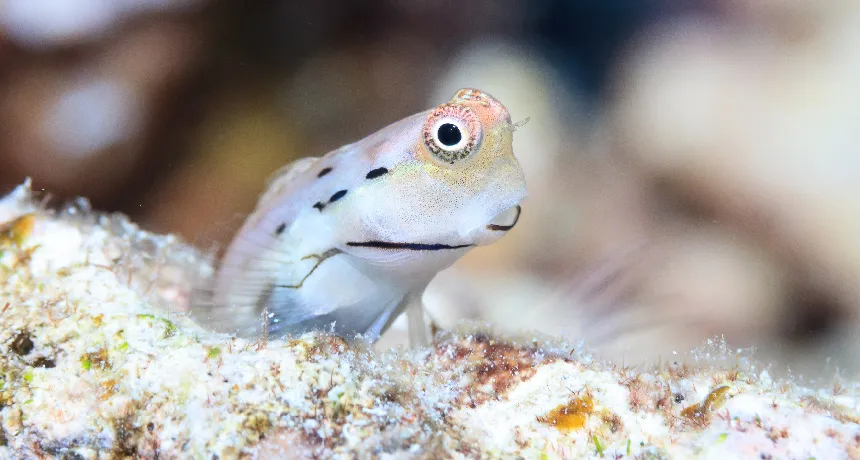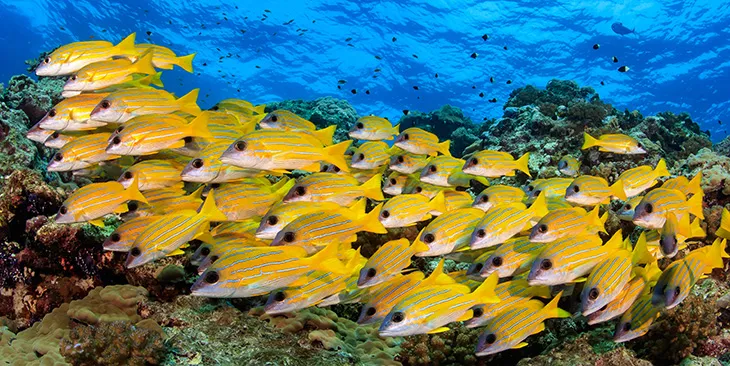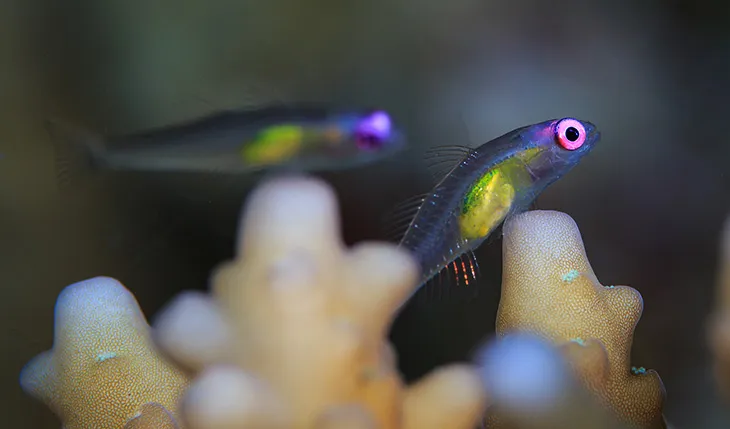
SHY BUT CRUCIAL Tiny fishes such as the Great Barrier Reef blenny (Ecsenius stictus) spend so much time fleeing and hiding that people catch only glimpses. Yet these shy species turn out to have an outsize importance to coral reefs.
Tane Sinclair-Taylor
Nervous little fishes that divers rarely notice could be unexpectedly important to coral reefs. A new study finds that nearly 60 percent of the fish flesh that feeds bigger fishes and other predators on a reef comes from tiny fishes that stick close to crevices and other hiding places.
These tiny species, called cryptobenthic fishes, may not look as if they amount to much among all the fishes swimming around reefs, says coral reef ecologist Simon Brandl. But new analyses show that these little species are like snack bowls that get quickly replenished. What keeps up the supply of snack-sized fishes is a stay-near-home tendency among many of their larvae, Brandl and colleagues propose online May 23 in Science.
Unlike many larger reef fish species, the young of cryptobenthic fishes are more likely to linger close to their parents’ home reef, the researchers found by combing through decades of data on what species of fish larvae get caught where. Many of the larger reef fishes have young that take longer, dangerous journeys in open water. But the cryptobenthic young stand a better chance of making it to adulthood by sticking close to the reef, where they quickly replace parents that get snacked, the team says.
It’s easy to overlook these snack-bowl bits of flesh among all the bigger, showy reef fishes. “You’d just perhaps notice them as these little flashes of red, white and yellow that kind of skedaddle to safety,” says Brandl, of Simon Fraser University in Burnaby, Canada.

In an earlier study, he and colleagues defined the group as 17 families of fish species, including gobies and blennies. In these families, at least 10 percent of known species measure less than 5 centimeters long, roughly as long as a pinkie finger. The majority of these little species are smaller, Brandl says.
He and colleagues got a sense of the fishes’ numbers in surveys on reefs in Australia, Belize and French Polynesia. The researchers fenced off sample plots, released clove oil and then collected every fish in a plot that succumbed to the oil’s anesthetic effects.
With this and other data, the researchers created computer simulations of spawning, larval return and adult replacement. In the end, these shy fishes provide a lot of prey for the bigger, showier predators.

That role is “hugely important,” says Deron Burkepile, a community ecologist at the University of California, Santa Barbara. “We’ve definitely overlooked these little cryptobenthic species.”
The new study fits into efforts to understand how coral reefs can be so densely packed with life on seafloor stretches with sparse nutrients. The answer that’s emerging shows that some species in reefs, such as sponges and plankton-eating fishes, are very good at pulling nutrients out of the thin soup of seawater. Once reefs collect those nutrients, fishes eating each other and peeing and pooping help hold those nutrients tight.
Recognizing the importance of crytobenthic fishes raises new worries about climate change, Burkepile says. Many of these tiny fishes need corals to survive, which are becoming an imperiled habitat due to warming temperatures (SN: 2/3/18, p. 16).






